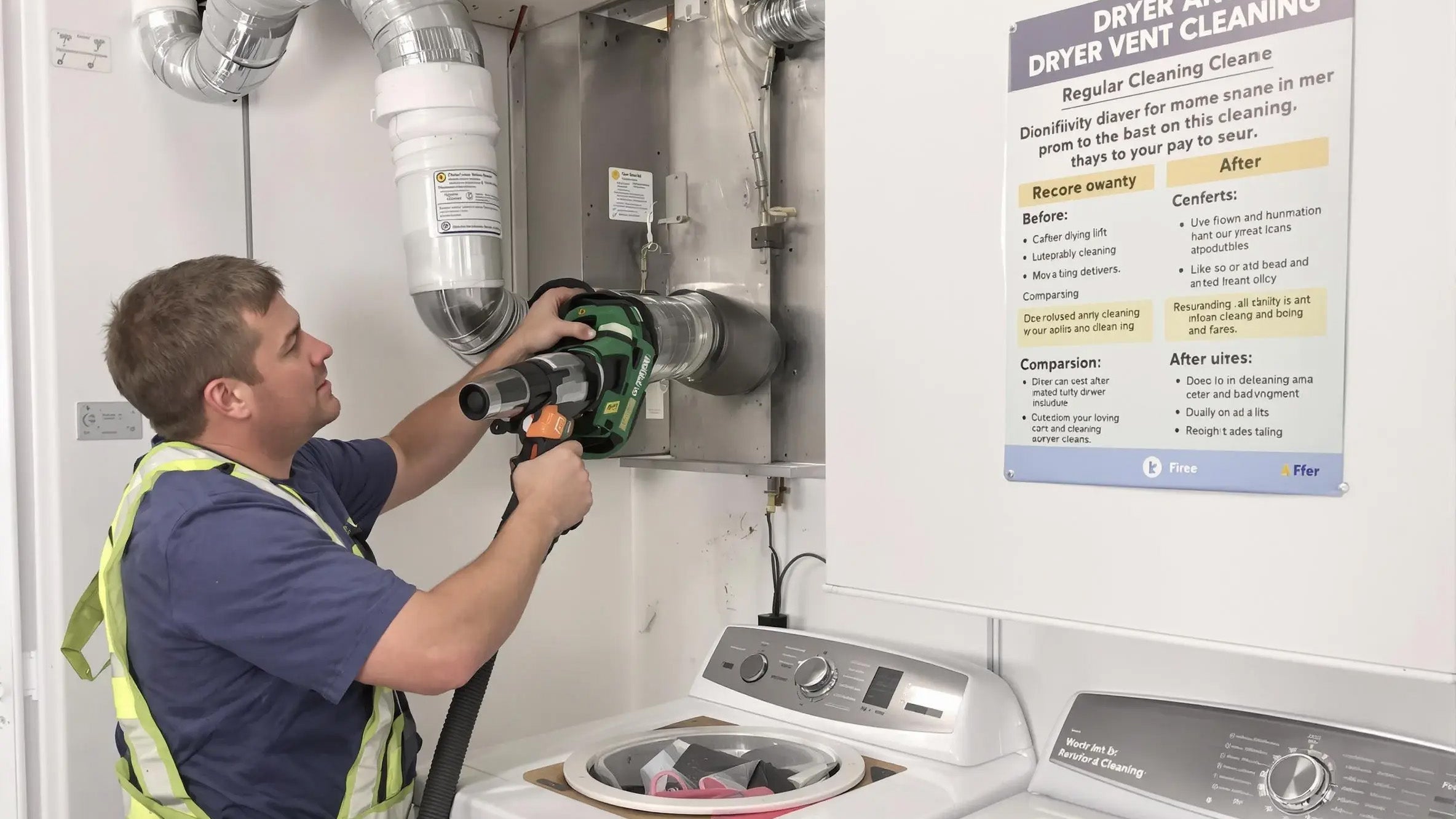If your dryer seems to take longer and longer to finish a load, it’s not just your imagination. Over time, lint can build up inside the dryer vent, blocking airflow and making your machine work harder than it should. What starts as a minor inconvenience can quickly turn into a serious safety risk—lint is highly flammable and one of the leading causes of household dryer fires.
What Causes Lint Build-Up in Dryer Vents
 Every time clothes tumble in the dryer, tiny fibers break loose. While the lint trap catches most of them, a portion escapes into the vent hose. Over months or years, this debris collects and forms dense layers of lint.
Every time clothes tumble in the dryer, tiny fibers break loose. While the lint trap catches most of them, a portion escapes into the vent hose. Over months or years, this debris collects and forms dense layers of lint.
Common reasons include:
- Neglecting regular cleaning: If you don’t empty the lint trap after each cycle, airflow weakens and debris travels deeper into the duct.
- Long or twisted vent hoses: Sharp bends and long runs trap lint easily.
- Improper hose material: Plastic or foil hoses can sag, allowing lint to settle.
- Blocked exterior vent: Bird nests or debris outside can prevent lint from escaping.
Warning Signs of Lint Blockage
If you notice any of these signs, it’s time to act:
- Clothes take longer to dry than usual.
- The dryer feels unusually hot to the touch.
- There’s a burning smell near the laundry area.
- You see lint around the vent opening or outside flap.
- Ignoring these symptoms can shorten your dryer’s lifespan and raise your electricity bill.
Why Lint Build-Up Is Dangerous

Lint is highly combustible. According to the U.S. Fire Administration, thousands of house fires each year are linked to dryers with clogged vents. When airflow is restricted, the dryer’s heating element can overheat, igniting the trapped lint.
Besides the fire risk, lint build-up can:
- Force your dryer to work harder, consuming more energy.
- Damage heating components and sensors.
- Trap moisture, leading to mold and odor problems.
- Regular cleaning not only improves safety but also helps your dryer run efficiently for years.
How to Clean a Dryer Vent

You can clear lint build-up yourself using a dryer vent cleaning kit and a vacuum.
Step-by-step:
- Unplug your dryer and pull it away from the wall.
- Detach the vent hose carefully.
- Insert the vent brush and twist to loosen lint.
- Use a vacuum to remove loosened debris.
- Check the outdoor vent to ensure strong airflow.
If your vent runs through walls or ceilings, schedule a professional dryer vent cleaning service annually for a thorough clean.
Preventing Future Lint Build-Up
- Clean the lint trap after every load.
- Use a semi-rigid aluminum vent hose instead of flimsy foil ducts.
- Keep the vent path short and avoid sharp turns.
- Inspect and clean the vent cover outside every few months.
- Replace damaged hoses immediately.
These small habits dramatically reduce fire risk and keep your dryer performing like new.
Conclusion
Lint build-up in dryer vents is a small issue that can lead to big problems. By understanding the causes, recognizing the warning signs, and cleaning regularly, you can prevent fire hazards and keep your dryer working efficiently. Whether you choose to DIY or hire a pro, the key is to stay proactive—your home’s safety depends on it.


